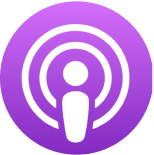Checklist Manifesto Author Atul Gawambe Shares Useful Tips for More Meaningful Exchanges at Work
In its most basic definition, effective communication is the relay of information from one person or group to another with as little friction as possible.
Unfortunately, friction is pervasive in communication. Confusion, misinformation, or poor delivery can result in crossed wires, frustration, and poor cohesion as teammates struggle to understand each other.
Keep reading to learn how you and your team can communicate effectively, improve relationships, and get more done.
- Be Clear
Clarity is paramount to effective communication. But unfortunately, messaging can get murky or muddled on the journey from the brain to the mouth.
Before delivering a speech or directing a meeting, outline your thoughts on paper. This way, you’ll be sure to use the words and phrases that match your meaning. Similarly, take a moment to re-read important emails and memos before hitting send. Then, ask yourself, “are my sentences simple to understand? Are my word choices thoughtful?
- Be Concise
Leaders and employees alike are asked to absorb a lot of information in a busy workplace. Therefore, keep your communication as short as possible while including necessary information.
Not only does brevity show respect for your colleagues’ time (rather than asking them to wade through a rambling email or monologue), but it puts vital information front and center, reducing the chance that something important will be overlooked or lost in the fray.
- Be Correct
Any time you share information, take the time to verify that it is factually and grammatically correct.
An email, memo, or proposal riddled with typos raises red flags about the quality of the work or information. And a factually incorrect statement, no matter how nicely worded, can wreak havoc on the team’s ability to make sound decisions regarding a project, budget, customer, or strategy.
- Be Complete
Incomplete information can be dangerous, leading team members to act in ways they might not have if they had all the relevant facts and figures.
Before you communicate, ask yourself, “Are there outstanding questions that need to be answered? Am I being transparent about the position of all parties or teams involved in this issue? Do I need to gather more information before I send this message, run this meeting, or submit this proposal?”
- Be Courteous
Whenever someone stops what they are doing to listen to your thoughts, read your email, or review your work, they give you their precious time. Return the courtesy with a respectful attitude, polite language, and requests rather than demands.
- Be Concrete
Being direct with requests, questions, or opinion statements can feel uncomfortable. However, in a busy, fast-paced work environment, veiled language is easily misinterpreted as a passing thought or low-priority directive. Instead, use clear, direct language when making requests or communicating critical information, so everyone gets the message.
- Be Coherent
Structure any meeting or piece of communication logically, keeping relevant information grouped. While it can be easy to jump around from topic to topic as new thoughts arise, take the time to edit and arrange your ideas logically. This practice will help your audience absorb and synthesize information.
Reflect and Apply
Take a moment to think about team members who demonstrate excellence in each of the seven Cs. Share one of your favorite quotes from this article on Twitter using #ChecklistManifesto—and tag an effective communicator on your team!








.webp)

.webp)
